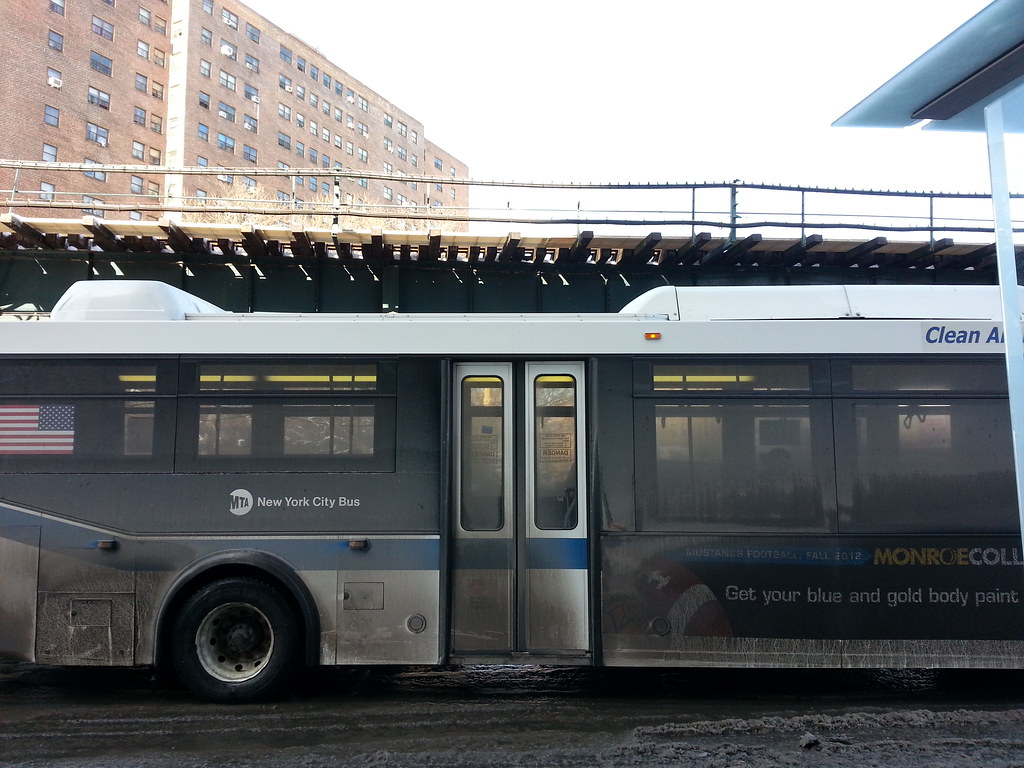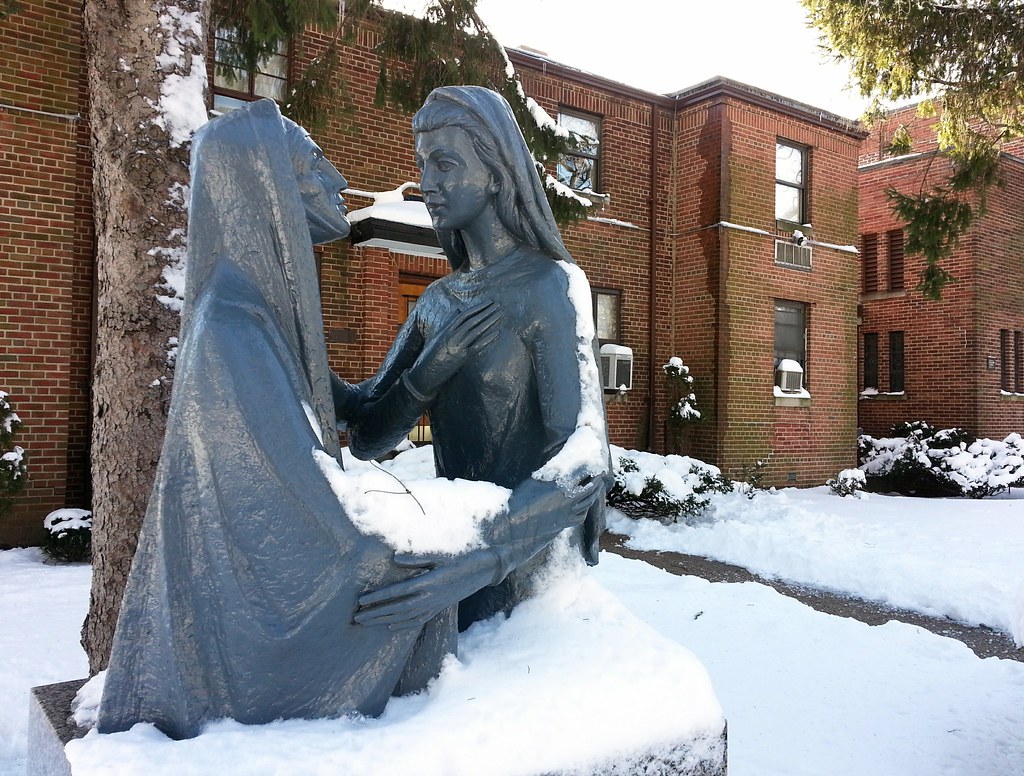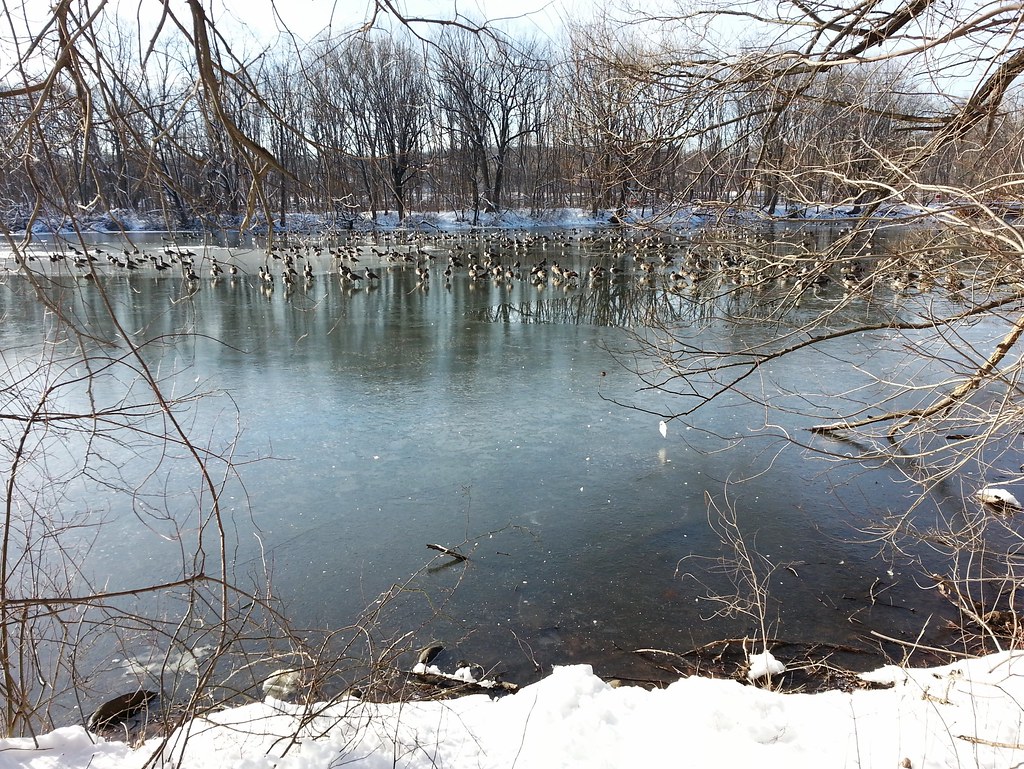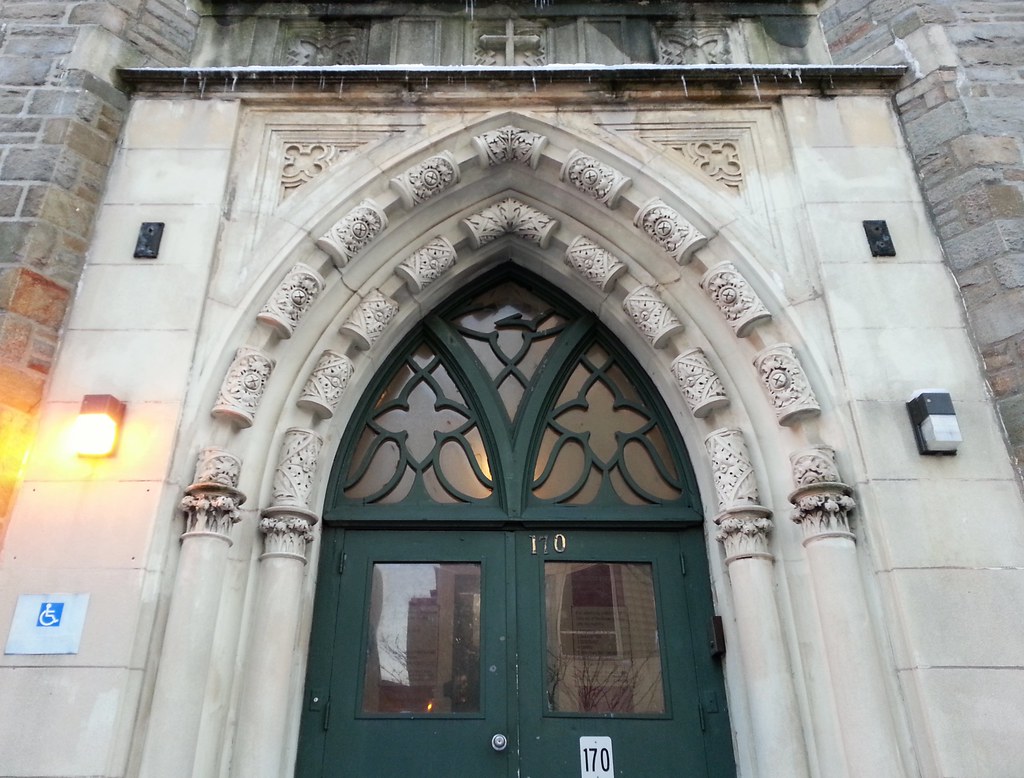

Edgar Allan Poe's Bronx cottage: a house for all seasons

to the massive, castellated Kingsbridge Armory. This vast structure, built around a century ago to house the National Guard's Eighth Coastal Artillery Regiment, has been vacant for almost 20 years now, but maybe not for much longer — national ice center, anyone?

Built into the side of a hill, this strange little enclave looks like it may have originally been a series of garages.
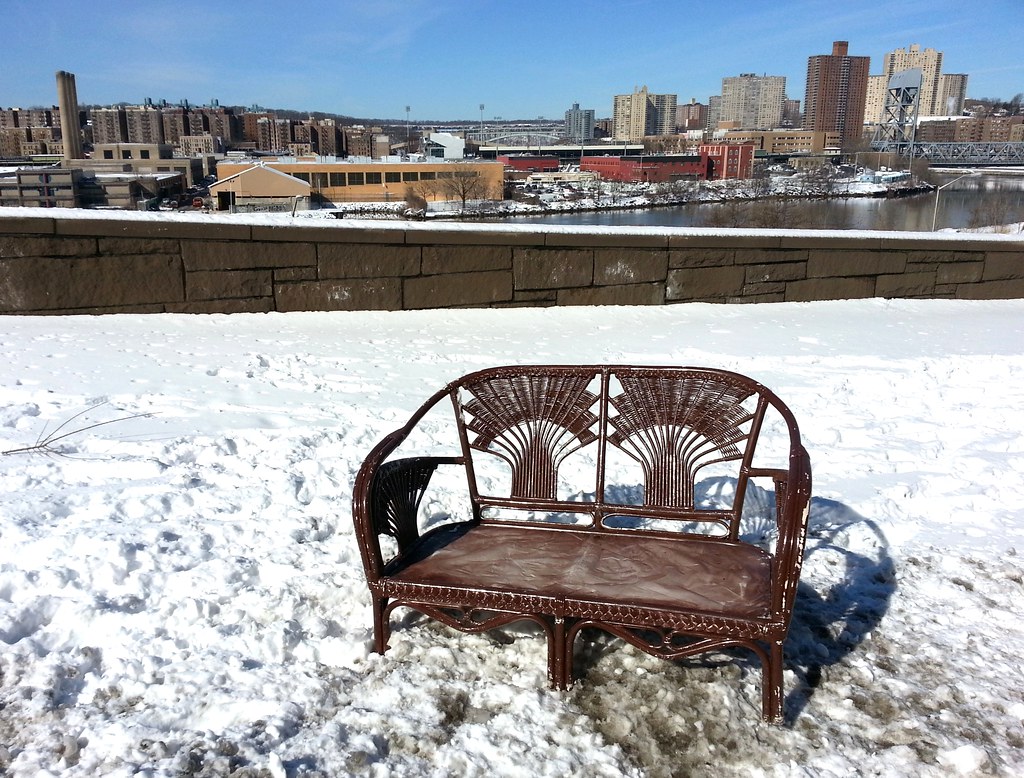
Although the view's better facing this way. Looking out over the Harlem River (that's Manhattan on the other side), you can see a few old acquaintances of ours. From left to right, we have the defunct Inwood incinerator stacks, the Henry Hudson Bridge (you might need a close-up to find it in the background), the Promenade Apartments, and the Broadway Bridge.

It's worth taking a closer look at the names on the bottles. I think my favorite is Dragon Blod.

According to its plaque, this statue memorializes the first coyote confirmed to have been seen in New York City since 1946, a female found dead in 1995 on the Major Deegan Expressway, which passes through the park (although it turns out that, unbeknownst to the Parks Department at the time, another coyote had been spotted in nearby Woodlawn Cemetery in 1994). There is now an established population of the canids in the Bronx — it's said that they particularly enjoy hanging around the golf course here at Van Cortlandt Park — and every once in a while, one will even make an appearance in Manhattan. A local scientist has enlisted students from the High School for Environmental Studies to help him set up camera traps around the city's parks to track the animals' growing presence — here's one of their shots.

Once the site of a village built by the Wiechquaeskeck (or Wickquasgeck, or Weckquaesgeek) tribe, this expansive field acquired its name from its use as a National Guard parade ground during the late 19th and early 20th centuries. It became a temporary home for 15 bison in 1907 (not the first time such creatures were kept at Van Cortlandt Park), and, along with the rest of the park, served as an Army training facility during World War I. Turned into a full-fledged recreation area in 1938, the recently reconstructed Parade Ground now contains, beneath all that snow, ten cricket pitches, six soccer fields, two baseball diamonds, two softball diamonds, and a 1.5-mile running path.
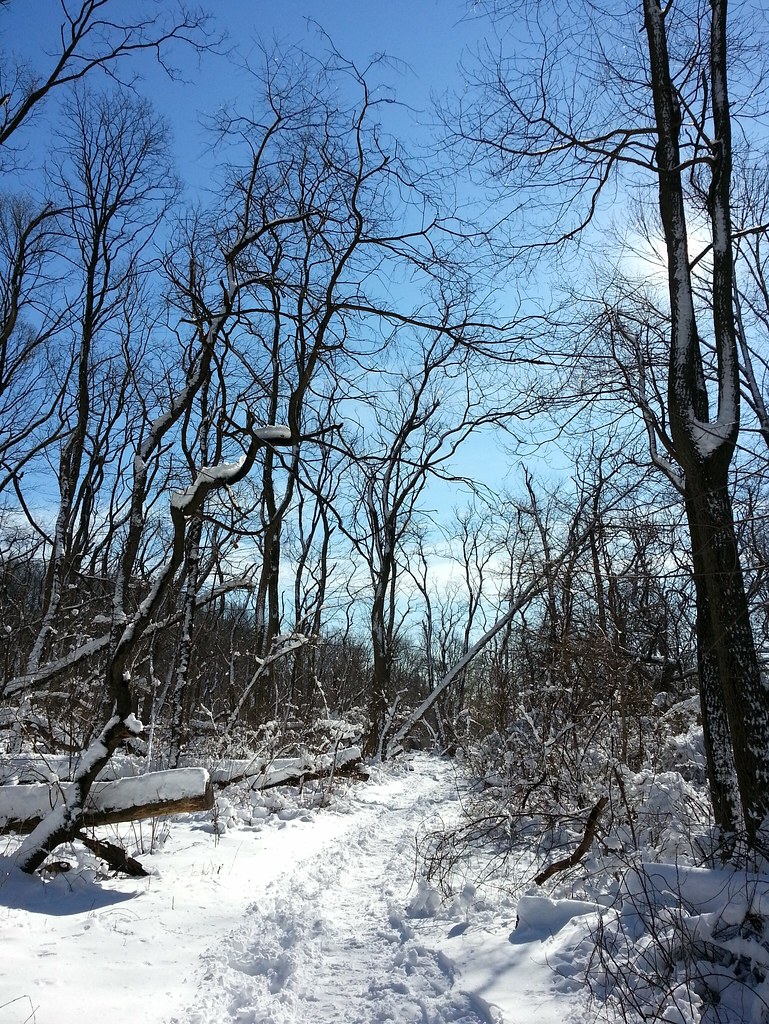
Following the course of the Old Put's Getty Square branch

Built in 1748-49, this* is the oldest house in the Bronx, and "was the scene of military maneuvers and intrigue" during the Revolutionary War. Here are some great photos of the well-maintained interior, which has served as a museum of 18th-century life since 1896.
* The L-shaped structure on the left is the original house. You can't tell it's L-shaped in this photo, though. This bird's-eye view and this photo of the front of the house should make things a bit clearer.

This gateway once led down to the sunken Colonial Garden, a formal garden surrounded on three sides by canals, designed by Samuel Parsons Jr. (of the Flushing horticulturalist Parsons) around the turn of the 20th century as a complement to the nearby Van Cortlandt House (located behind me in this photo), which had just been turned into a museum of 18th-century life.
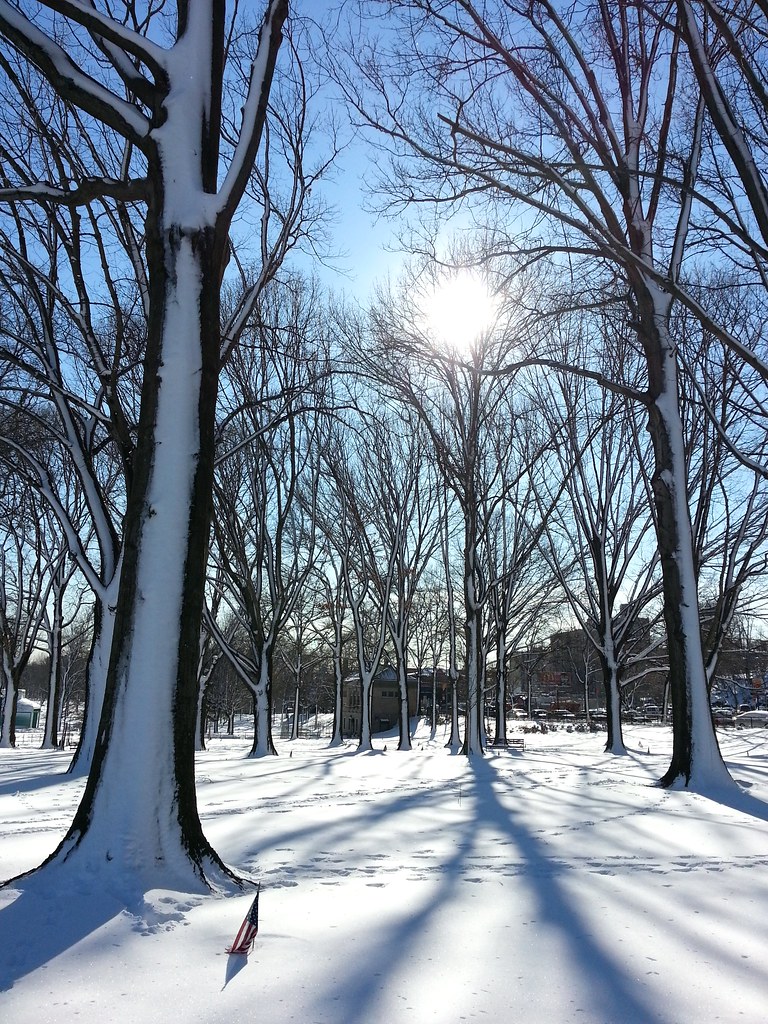
Planted in 1949 and recently renovated after years of neglect
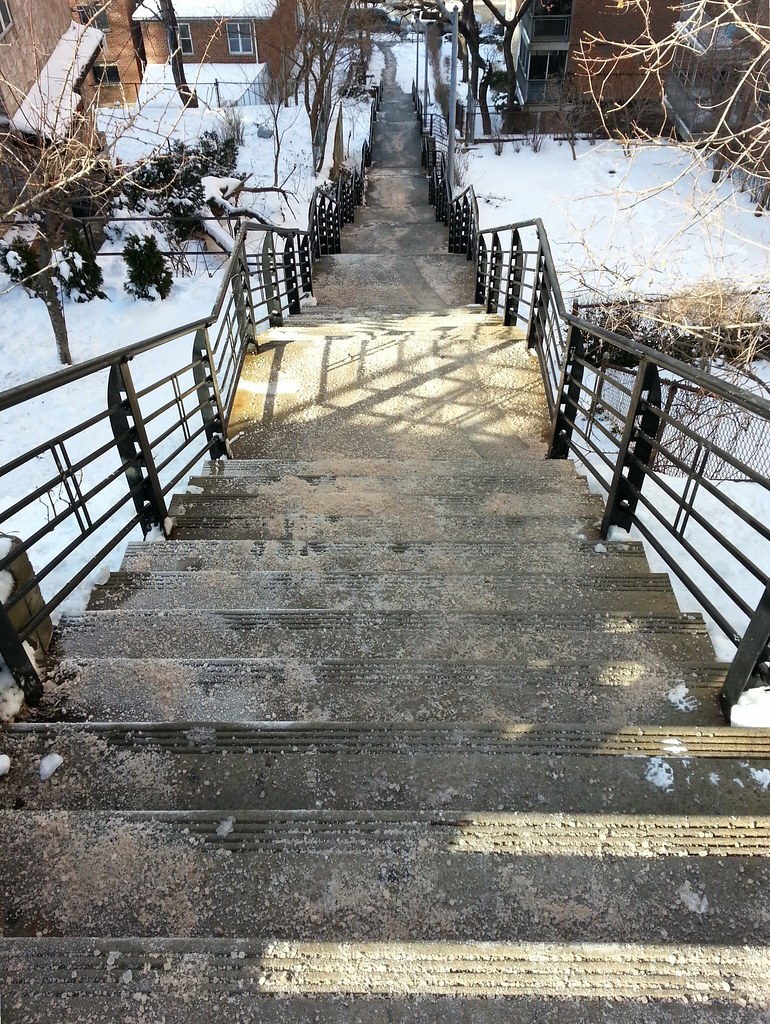
One of the many step streets found on the steep slopes of Kingsbridge Heights

In the early years of the 20th century, when the boys at the New York Central Railroad were planning to build Grand Central Terminal (declared by the NY Times to be "the greatest station, of any type, in the world" when it opened just over 100 years ago), they wanted to test out several different kinds of stone they were considering using for the building's facade. So they lined up 13 pillars* from various quarries here in Van Cortlandt Park beside the rails of the Old Put (which is now a walking trail) and waited to see which one fared best as it weathered. They ended up going with Indiana limestone, although that was apparently just because it was the cheapest to transport.
* Ignore the parts about Cornelius Vanderbilt in the link above; he was long dead by 1900.

on the defunct New York and Putnam Railroad

Turns out they do.
The guy looking at the camera handed me a little flyer as I passed by. It reads, in part:
WE BUY GOLD
AMAZING LINEN CORP.
3481 JEROME AVE. BRONX, NY 10467
INSIDE THE CURTAIN STORE, NEXT TO
THE CITIBANK, ACROSS THE STREET
FROM THE POST OFFICE.

Built around 1758, just a decade after the Van Cortlandt mansion, this sturdy fieldstone structure is the Bronx's second-oldest house. It now serves as the Museum of Bronx History; after being donated to the Bronx County Historical Society in 1965, it was wheeled across the street to this spot on public parkland. (Actually, it was plopped down in the middle of what was then a street, and that section of street was subsequently incorporated into Williamsbridge Oval Park.) A few years later, the amphibious Bronx River Soldier was stationed here, and he's remained ever since.

This park sits on top of the former Williamsbridge Reservoir, opened in 1888 to provide water, piped in from the Bronx and Byram Rivers, to the West Bronx, which had just been annexed by New York City in 1874. By 1919, the reservoir was no longer needed and was taken out of service, but it continued to be used as an emergency backup (and unauthorized neighborhood swimming hole) until being drained in 1925.
Robert Moses wanted to turn the site into a massive sports amphitheater with a seating capacity of 100,000, but this plan was shot down by local residents. Instead, the reservoir was partially filled in and converted into a public recreational facility; the opening ceremony in 1937 concluded with a race featuring Glenn Cunningham, the world-class track star who had managed to overcome a horrific childhood accident that left him burned and scarred and unable to walk for many months.
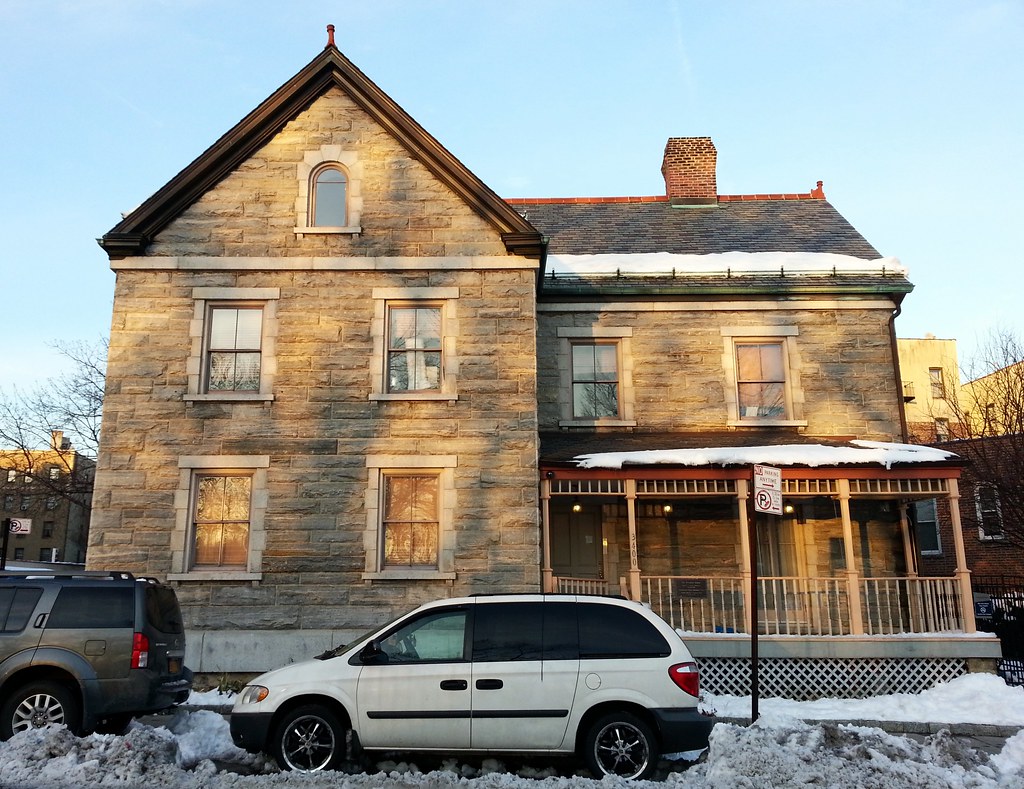
Built in 1889-90 as a residence for the reservoir keeper, this house was bought by Isaac Barkey, a physicist and engineer, in 1946. He constructed a chemical and biological laboratory in the basement, where he conducted his "confidential research", and spent many years trying to shape the structure into the mansion of his dreams. He never succeeded, though, and finally moved out, heartbroken, in 1998, selling the house to the Mosholu Preservation Corporation, which still owns it today.
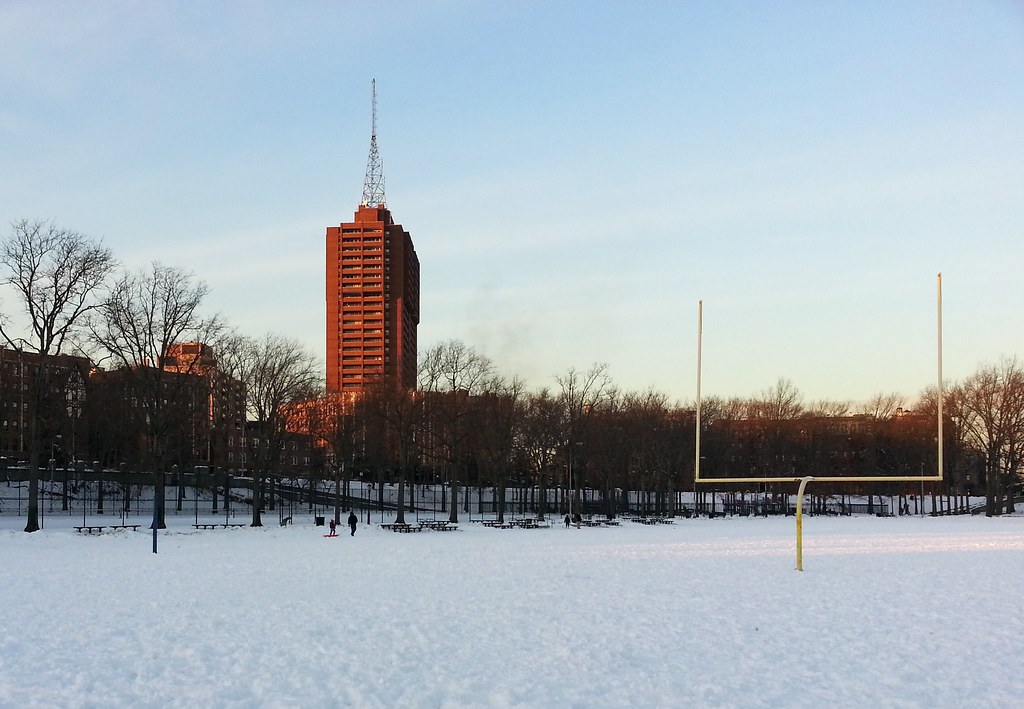
If anyone else out there is a fan of Fordham University's WFUV-FM, you might be interested to know that this is the station's main transmission tower, standing tall atop an apartment building owned by Montefiore Medical Center. The hospital offered to let Fordham locate its antenna on this rooftop in 2004 to resolve a decade-long dispute between the university and its next-door neighbor, the New York Botanical Garden, whose president and chairman were "shocked and deeply disturbed" by the radio tower Fordham had been building on its campus, calling it "a jarring intrusion" on the garden's "magnificent backdrop of unimpeded skyline".

on the property of a building owned, I believe, by Montefiore Medical Center

